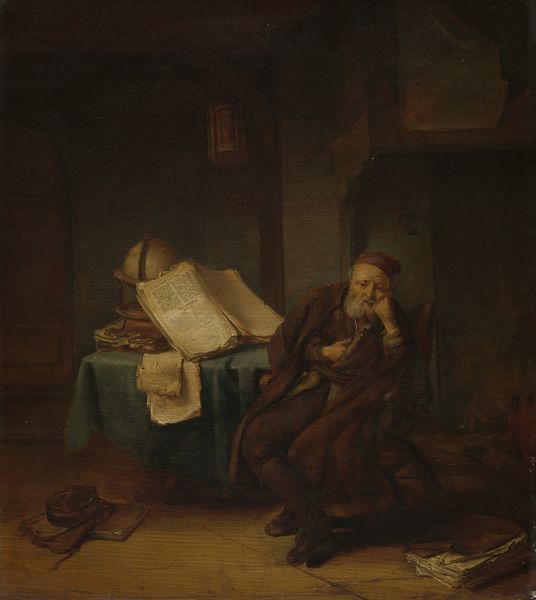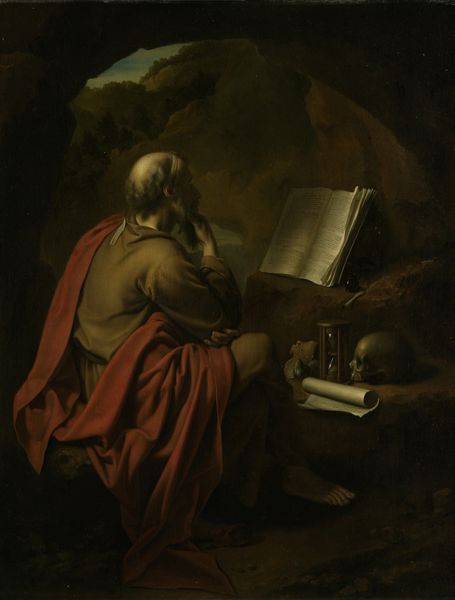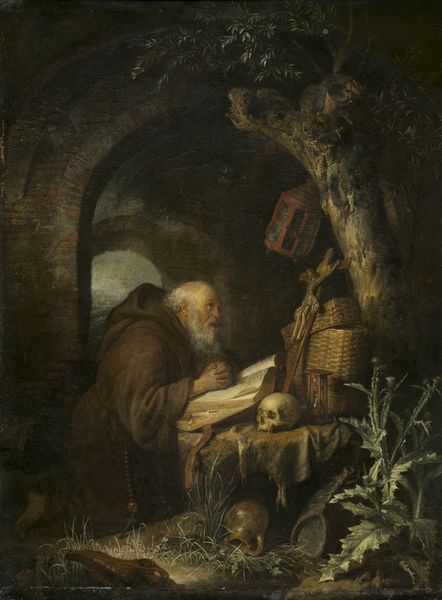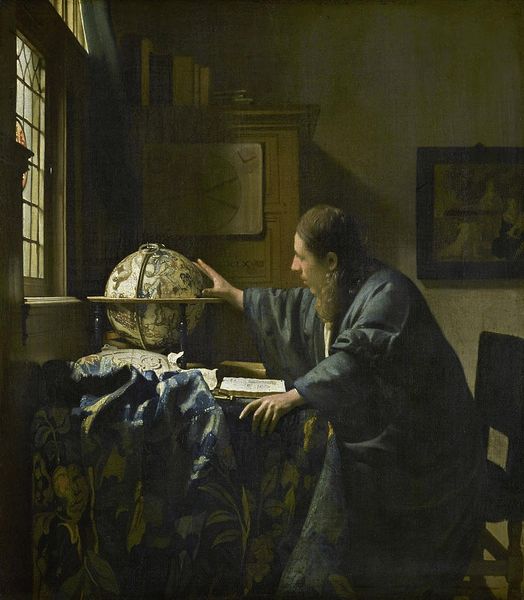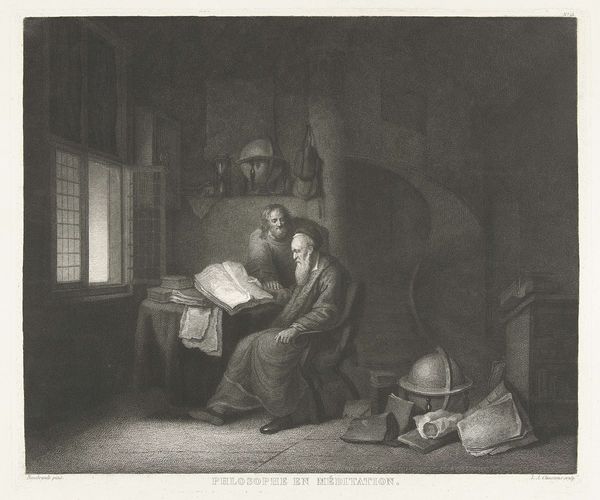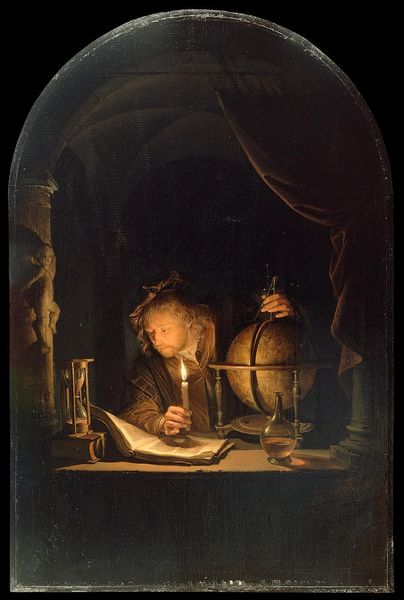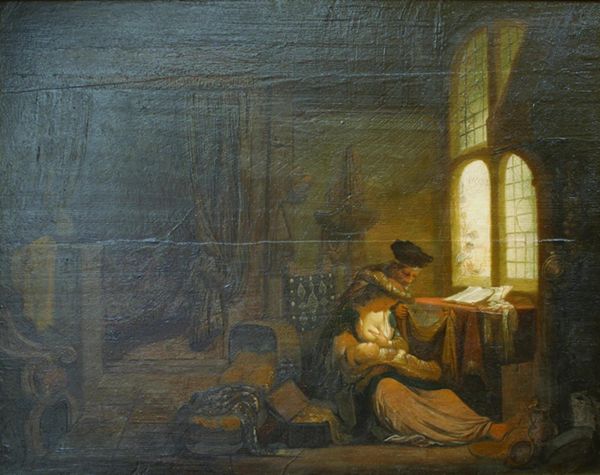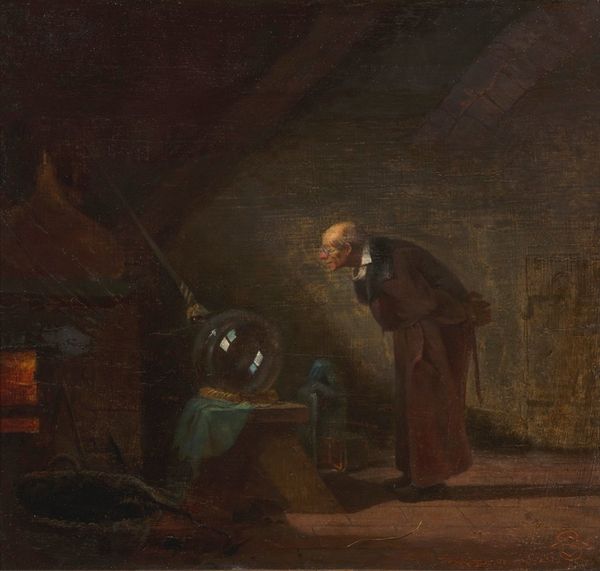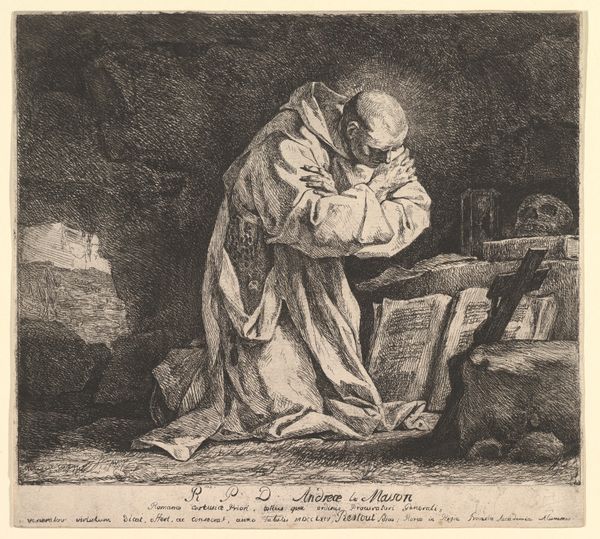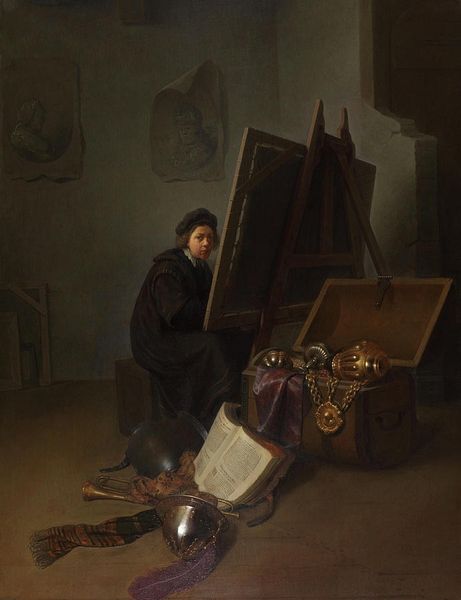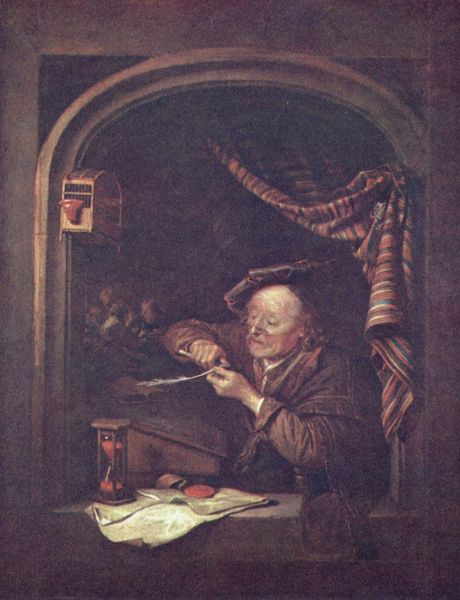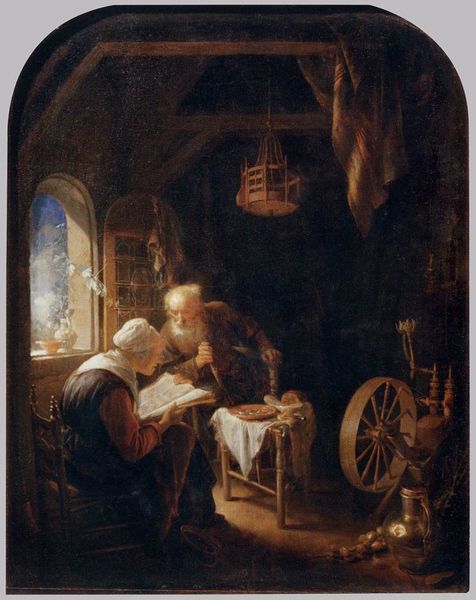
oil-paint
#
portrait
#
baroque
#
oil-paint
#
landscape
#
figuration
#
momento-mori
#
chiaroscuro
#
history-painting
Dimensions: 41 cm (height) x 32.5 cm (width) (Netto)
Editor: This is "Eremit Praying," painted in 1635 by Jacob van Spreeuwen. It's oil on… well, something, I'm not sure what, maybe wood panel? Anyway, the mood is very contemplative, almost severe. What formal qualities stand out to you? Curator: The composition is remarkable for its stark contrasts. Note the artist’s manipulation of light and shadow – the chiaroscuro – to create a dramatic effect. Observe how the light source, seemingly from an unseen window, illuminates the open book, the crucifix, and select details of the hermit and memento mori scattered about, while plunging the rest of the scene into deep shadow. How does this dramatic use of light influence the viewers' understanding? Editor: I think it highlights the objects representing the spiritual path, as opposed to the dark cave representing… earthly existence? I’m wondering how significant is the skull at the bottom of the piece? Curator: Indeed, the skull acts as a *memento mori*, reminding us of the transience of life. However, consider its formal integration within the composition. Note the placement relative to the crucifix and the illuminated book. Do you perceive a visual hierarchy being established through line, form and value contrast? Is one object elevated over another through compositional means alone? Editor: I think the composition subtly favors the crucifix because it is more brilliantly lit and placed slightly higher. It draws your eye up, past the other items. Curator: Precisely. This upward movement, reinforced by the play of light, transforms what might be a morbid scene into one imbued with a sense of hopeful transcendence. Spreeuwen uses formal elements to convey meaning beyond mere representation. Editor: That’s fascinating. I came in seeing mostly gloom and darkness, but now I can also see how he uses light and the arrangement of elements to suggest hope and transcendence. Curator: Indeed, through the masterful use of composition and light, the artist transforms a vanitas scene into an invitation for spiritual reflection.
Comments
No comments
Be the first to comment and join the conversation on the ultimate creative platform.
